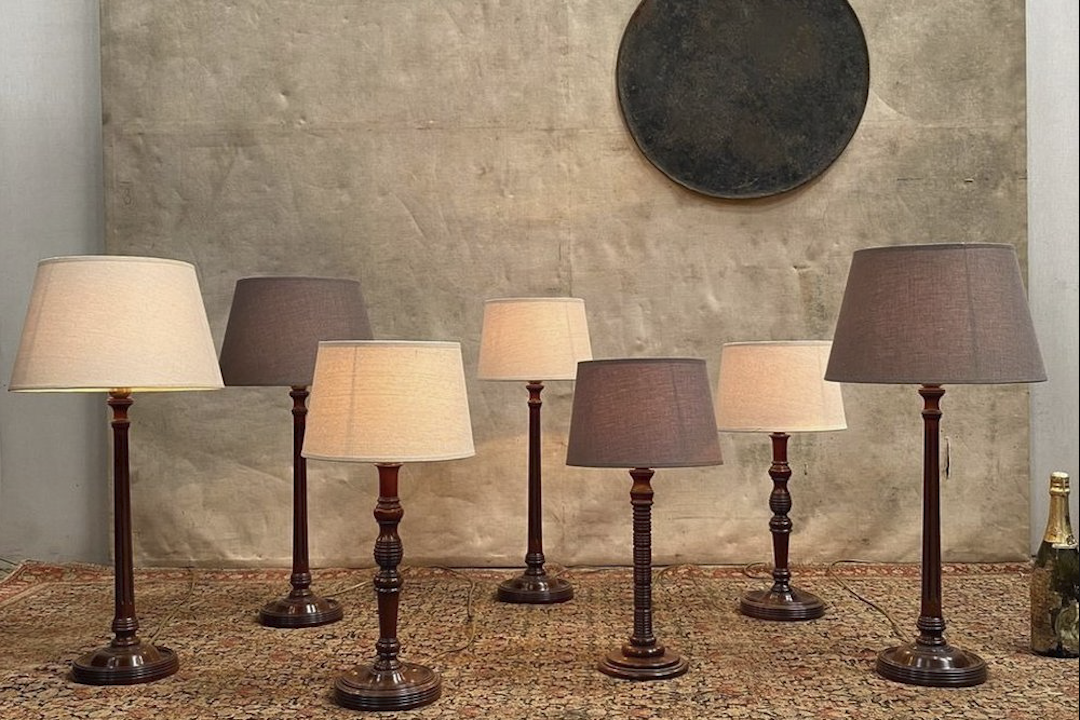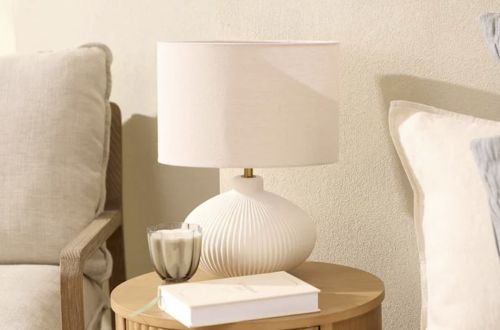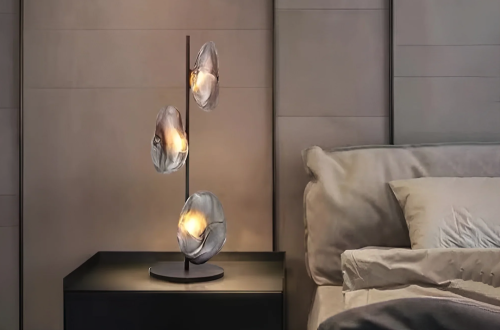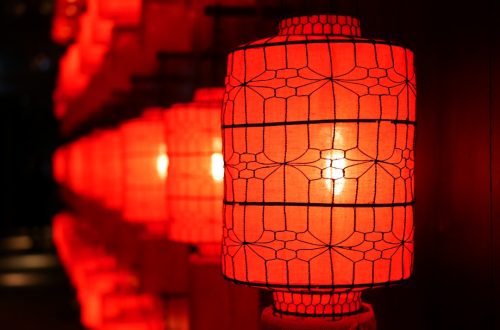
Protect Your Eyes with a Simple Table Lamp
The significance of eye protection cannot be overstated, especially in an age where digital screens dominate our daily lives. With the average person spending over seven hours a day in front of screens, the risk of developing eye strain, fatigue, and long-term vision problems has escalated dramatically. The phenomenon known as Computer Vision Syndrome (CVS) encompasses a range of symptoms including dry eyes, blurred vision, and headaches, all of which can be exacerbated by inadequate lighting conditions.
Protecting our eyes is not merely about shielding them from physical harm; it also involves creating an environment that minimizes strain and promotes visual comfort. Moreover, the importance of eye protection extends beyond just screen time. Many activities, such as reading, crafting, or even cooking, require adequate lighting to prevent squinting and straining the eyes.
Poor lighting Uselu can lead to a host of issues, including decreased productivity and increased discomfort. As we age, our eyes naturally become more susceptible to damage from UV rays and blue light emitted by screens. Therefore, investing in proper eye protection strategies is essential for maintaining optimal vision health throughout our lives.
Benefits of Using a Table Lamp
Table lamps serve as a crucial component in creating an ideal lighting environment for various tasks. One of the primary benefits of using a table lamp is the ability to control the intensity and direction of light. Unlike overhead lighting, which can create harsh shadows and glare, table lamps provide focused illumination that can be adjusted according to individual needs.
This targeted lighting is particularly beneficial for activities that require precision, such as reading or working on intricate projects. By reducing glare and providing adequate light where it is needed most, table lamps can significantly decrease eye strain. In addition to their functional advantages, table lamps also contribute to the overall ambiance of a space.
They come in a myriad of designs, colors, and styles, allowing individuals to express their personal taste while enhancing the aesthetic appeal of their environment. A well-placed table lamp can create a warm and inviting atmosphere, making it easier to relax and focus on tasks at hand. Furthermore, many modern table lamps are equipped with features such as adjustable brightness levels and color temperature settings, enabling users to customize their lighting experience to suit their preferences and activities.
Choosing the Right Table Lamp for Eye Protection
Selecting the appropriate table lamp is essential for maximizing eye protection and comfort. When choosing a lamp, one should consider factors such as brightness, color temperature, and design. Brightness is typically measured in lumens; a higher lumen count indicates a brighter light.
For reading or detailed work, a lamp with at least 800 lumens is recommended to ensure sufficient illumination without causing strain. Additionally, the color temperature of the light plays a significant role in eye comfort. Warmer light (around 2700K to 3000K) tends to be more soothing for the eyes, while cooler light (above 4000K) can be more stimulating but may also contribute to eye fatigue over prolonged exposure.
Another critical aspect to consider is the lamp’s design and adjustability. A flexible arm or adjustable shade allows users to direct light precisely where it is needed, minimizing shadows and glare. Lamps with diffusers can help soften harsh light and reduce glare, making them more comfortable for extended use.
Furthermore, selecting a lamp with an energy-efficient LED bulb not only benefits eye health but also contributes to lower energy consumption and longer bulb life. By carefully considering these factors, individuals can choose a table lamp that not only enhances their workspace but also prioritizes their eye health.
Proper Positioning of the Table Lamp
The positioning of a table lamp is just as crucial as its selection when it comes to protecting your eyes. Ideally, the lamp should be placed at an angle that minimizes glare on screens or reading materials while providing adequate illumination. For right-handed individuals, placing the lamp on the left side of the workspace allows for optimal lighting without casting shadows on the page or screen.
Conversely, left-handed individuals may benefit from positioning the lamp on the right side. This strategic placement helps ensure that light falls directly onto the work surface without obstructing visibility. In addition to side placement, the height of the lamp is also important.
A lamp that is too low may create shadows or require excessive leaning forward to see clearly, while one that is too high may not provide sufficient light where it is needed most. The ideal height allows for direct light without causing discomfort or strain on the neck or back. Furthermore, ensuring that the lamp is positioned away from reflective surfaces can help reduce glare and enhance visual comfort.
By taking these factors into account when positioning a table lamp, individuals can create an environment that supports their eye health and overall well-being.
Adjusting the Light Intensity
Adjusting the light intensity of a table lamp can significantly impact eye comfort and productivity. Many modern lamps come equipped with dimming features or multiple brightness settings that allow users to tailor the light output according to their specific needs. For instance, during daytime hours when natural light is abundant, a lower intensity setting may suffice for reading or casual tasks.
However, as daylight fades or during evening hours when artificial lighting becomes necessary, increasing the brightness can help maintain clarity and reduce strain. Moreover, adjusting light intensity can also play a role in reducing fatigue during prolonged tasks. For example, when working on detailed projects or reading for extended periods, using a higher intensity setting can help keep the eyes engaged without requiring excessive effort to focus.
Conversely, during relaxation periods or when engaging in less demanding activities like browsing through magazines or unwinding with a book, softer lighting can create a calming atmosphere conducive to rest. By being mindful of light intensity adjustments throughout the day, individuals can enhance their visual comfort and protect their eyes from unnecessary strain.
Taking Breaks and Resting Your Eyes
Boosting Productivity and reducing burnout
Incorporating short breaks into daily routines not only alleviates eye strain but also enhances overall productivity by preventing burnout. Engaging in activities that promote relaxation during breaks can be beneficial, such as simple exercises that relieve tension built up from prolonged screen time or reading.
Practicing Mindfulness for Enhanced Relaxation
Practicing mindfulness techniques such as deep breathing or meditation during breaks can further enhance relaxation and reduce stress levels associated with visual tasks. By prioritizing regular breaks and incorporating eye relaxation techniques into daily routines, individuals can significantly improve their eye health and overall well-being.
Improving Eye Health and Overall Well-being
Other Tips for Eye Protection
Beyond using table lamps and taking breaks, there are several other strategies individuals can adopt to protect their eyes effectively. One important practice is maintaining proper distance from screens or reading materials. The ideal distance for computer screens is typically between 20 to 30 inches away from the eyes, while printed materials should be held at a comfortable distance that allows for clear visibility without straining the neck or eyes.
Additionally, ensuring that screens are positioned at eye level can help reduce neck strain and promote better posture. Another vital aspect of eye protection involves regular eye examinations with an optometrist or ophthalmologist. Routine check-ups allow for early detection of potential vision problems and provide opportunities for personalized recommendations regarding eyewear or protective measures against blue light exposure from screens.
Furthermore, incorporating foods rich in vitamins A, C, E, and omega-3 fatty acids into one’s diet can support overall eye health. Foods such as leafy greens, carrots, fish, nuts, and citrus fruits are known to contribute positively to vision health and may help mitigate age-related vision issues.
Prioritizing Eye Health
Prioritizing eye health is essential in today’s fast-paced digital world where visual demands are ever-increasing. By understanding the importance of eye protection and implementing strategies such as using appropriate table lamps, adjusting light intensity, taking regular breaks, and maintaining proper screen distance, individuals can significantly enhance their visual comfort and overall well-being. Additionally, adopting healthy lifestyle choices such as regular eye examinations and a balanced diet rich in nutrients beneficial for vision will further support long-term eye health.
As we navigate our daily lives filled with screens and various visual tasks, it becomes imperative to cultivate habits that protect our eyes from strain and fatigue. By making informed choices regarding lighting conditions and incorporating practices that promote relaxation and care for our eyes, we can ensure that our vision remains sharp and our overall quality of life improves significantly over time.





